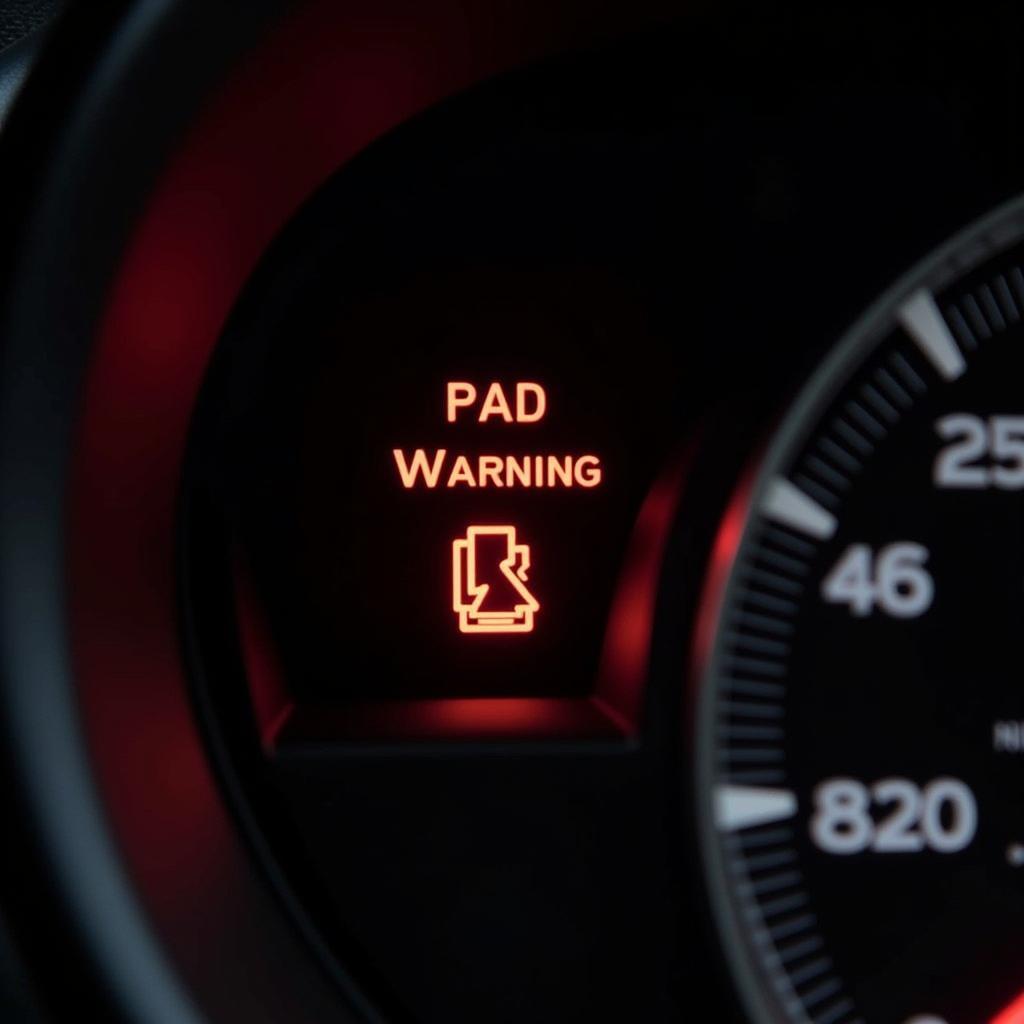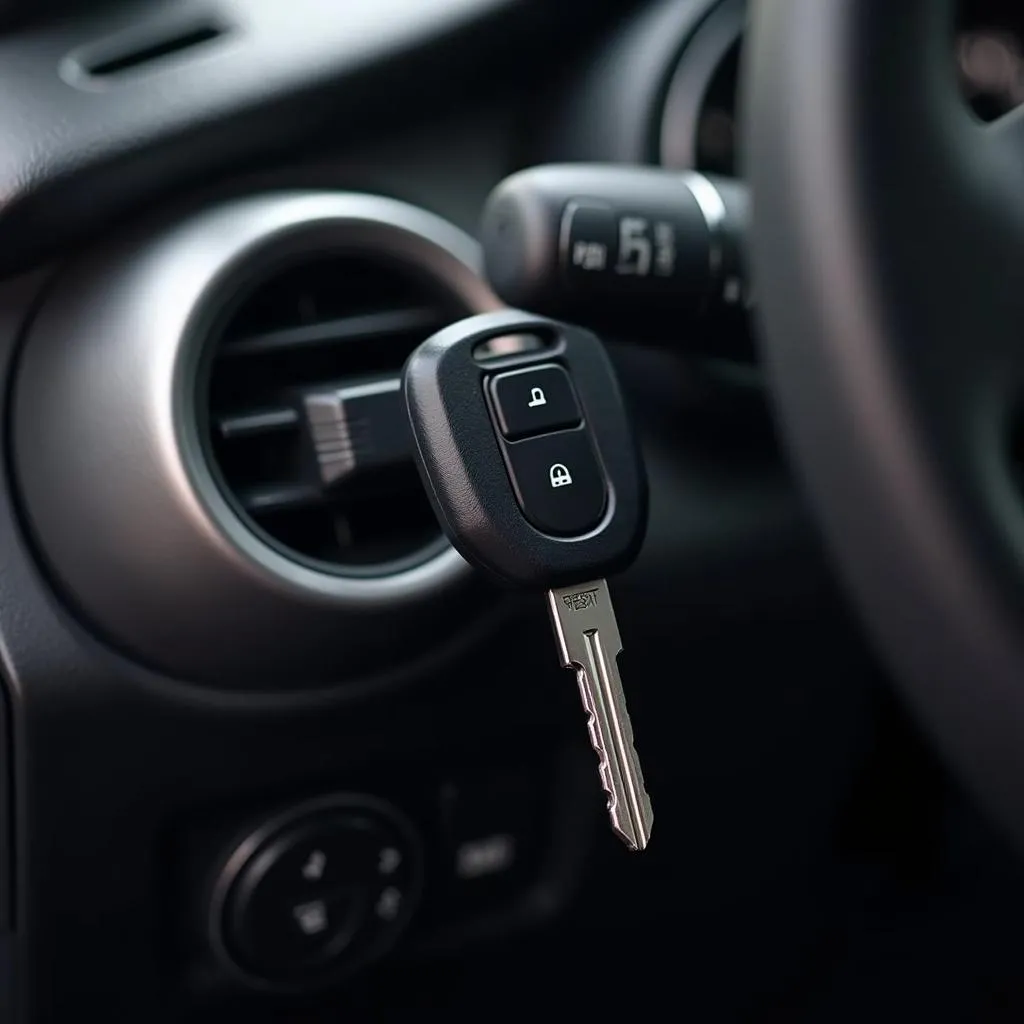The brake pad warning light on your Nissan Qashqai is a crucial safety feature designed to alert you when your brake pads are wearing thin and need replacing. Ignoring this warning light can lead to reduced braking efficiency and potential safety hazards. This comprehensive guide will explain the reasons behind the Nissan Qashqai brake pad warning light, how to diagnose the issue, and provide potential solutions.
Understanding Your Nissan Qashqai’s Brake System
Your Nissan Qashqai’s braking system is a complex network of components that work together to slow down and stop your vehicle. At the heart of this system are the brake pads, which apply pressure to the brake rotors to create friction and slow the wheels.
Over time, brake pads wear down due to this constant friction. When the brake pad material reaches a critically low level, a sensor triggers the brake pad warning light on your dashboard.
Common Reasons for the Brake Pad Warning Light
While worn brake pads are the most common reason for the warning light, several other factors can trigger it:
- Worn brake pad sensor: The sensor itself might be faulty or damaged, triggering the light even with sufficient brake pad material.
- Damaged brake disc: Deep scratches or grooves on the brake disc can also trigger the warning light.
- Low brake fluid: Brake fluid is essential for transferring hydraulic pressure from the brake pedal to the brakes. Low brake fluid can trigger the warning light as it might indicate a leak in the system.
- Electrical issues: Faulty wiring or a malfunctioning dashboard indicator light can also cause the warning light to illuminate.
Diagnosing the Brake Pad Warning Light
 Nissan Qashqai Dashboard with Brake Pad Warning Light
Nissan Qashqai Dashboard with Brake Pad Warning Light
When the brake pad warning light illuminates on your Nissan Qashqai’s dashboard, it’s essential to diagnose the problem accurately. Here’s a step-by-step guide:
-
Check your brake pad thickness: This is the first and most crucial step. Park your car on a level surface and inspect the brake pads through the spaces between the wheel spokes. If the pad material is less than 1/4 inch thick, it’s time for a replacement.
-
Inspect the brake pad sensor: The sensor is a small wire located on the brake pad itself. Ensure it’s not damaged, broken, or disconnected.
-
Examine the brake disc condition: Check your brake discs for any deep scratches, grooves, or uneven wear. These signs might require a brake disc resurfacing or replacement.
-
Check the brake fluid level: Locate the brake fluid reservoir under the hood and ensure the fluid level is within the minimum and maximum markers.
Solutions for the Brake Pad Warning Light
The solution for the brake pad warning light depends on the underlying cause. Here are some potential solutions:
-
Brake pad replacement: If your diagnosis reveals worn brake pads, a replacement is necessary. It’s crucial to have a qualified mechanic replace brake pads to ensure proper installation and safety.
-
Brake pad sensor replacement: A damaged or faulty sensor needs replacing, even if the brake pads are still in good condition.
-
Brake disc resurfacing or replacement: If your brake discs are damaged, resurfacing or replacement might be necessary. This procedure requires professional assistance.
-
Brake fluid top-up or leak repair: If the brake fluid level is low, top it up to the recommended level. However, if the level drops again quickly, it indicates a leak that needs immediate repair.
-
Addressing electrical issues: If your diagnosis points towards electrical problems, it’s best to consult a qualified auto electrician to diagnose and fix the issue.
Addressing the Nissan Qashqai Yellow Brake Warning Light
nissan qashqai yellow brake warning light
In some cases, your Nissan Qashqai might display a yellow brake warning light instead of the typical red one. This usually indicates an issue with the vehicle’s electronic stability control (ESC) system or anti-lock braking system (ABS).
While a yellow brake warning light might not be as immediately critical as a red one, it’s still crucial to address the issue promptly to ensure the proper functioning of your vehicle’s safety systems.
Expert Insights on Nissan Qashqai Brake Pad Warning Lights
“Many car owners underestimate the importance of addressing the brake pad warning light,” says John Smith, a senior automotive technician with over 20 years of experience. “Ignoring this warning can not only lead to costly repairs down the line but also compromise your safety on the road.”
He further emphasizes, “Regular maintenance, including brake inspections, can prevent many brake-related issues and ensure optimal performance and safety.”
Conclusion
The brake pad warning light on your Nissan Qashqai is a critical safety feature that should never be ignored. By understanding its causes and following the steps outlined in this guide, you can ensure the optimal performance and safety of your vehicle. Remember, timely diagnosis and repair are crucial for a safe and enjoyable driving experience.


